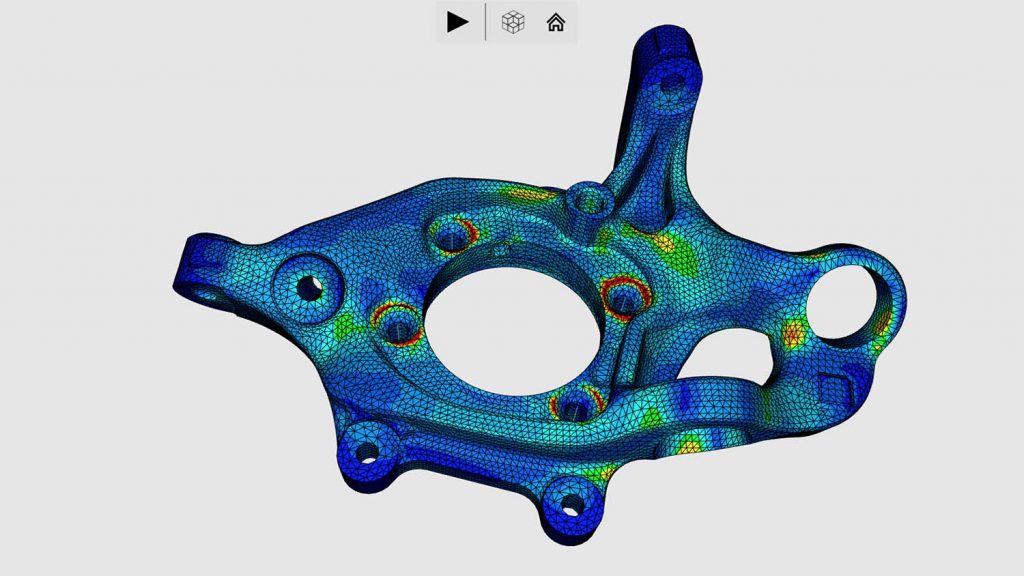Ceetron Visual Workflows, a range of cross-solver tools to visualise and automate post-processing workflows for remote CAE, have been launched.
The aim is that simulation results should be able to accessed from anywhere and on any device, in 3D and interactively – not through e-mails or sharing folders with plots, 2D images or videos.
Ceetron Visual Workflows is made up of three toolsets that each look to address key stages of the analysis workflow, enabled by Ceetron’s cloud-native WebGL visualisation technology.
The first focuses on generating analysis models, either locally or remotely, using Ceetron’s post-processor Analyzer
It also includes a Python API to automate the process, which allow for custom applications to be built to handle the analysis model generation.
Ceetrons state that this works with wide range of industry standard results, from the likes of Abaqus, Ansys, Nastran, Hyperworks.
A subscriptions and storage space on via Ceetron deals with the storage of models, although the portal can be installed within a company IT system. Further more, the underlying SDK is available to build your own portal.
“With Ceetron Visual Workflows, we have done our best to show the value of our technology once the bits and pieces are put together,” said a Ceetron spokesperson. “The toolbox is yours: build new workflows, enhance old ones, or just enjoy sharing CAE data the way it should be.”
The analysis models in the portal are accessible from anywhere on any device that has a web browser, as well as some desktop-based sharing applications – handy for inserting an analysis models into a Powerpoint presentation.
Client-side rendering means no GPU is required on the server, which Ceetron claims lowers the cost by five- to 10-fold, and gives browser-based applications the visual quality of a desktop counterpart.






